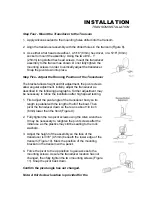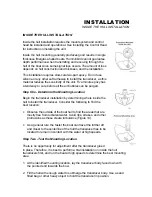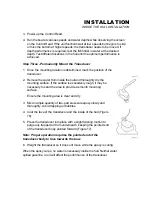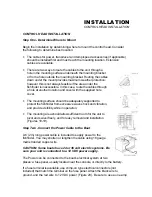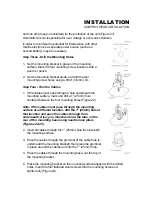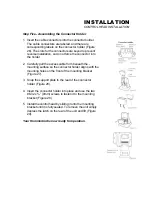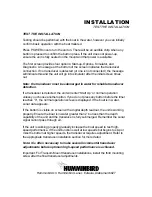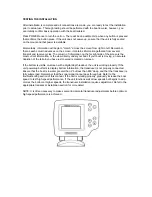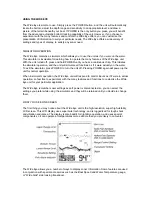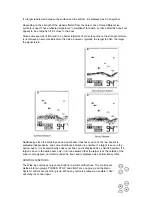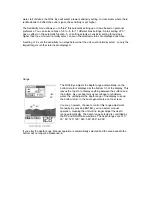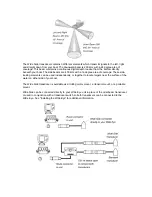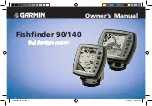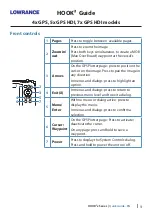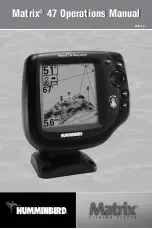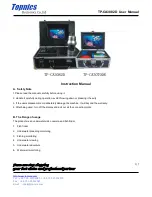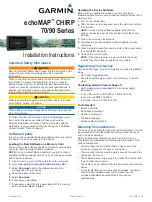
Figure A shows the default screen layout. If you are using the
temperature/speed accessory, the screen layout will be
slightly different, as shown in Figure B.
If you are using the Wide Side accessory transducer, the
screen layout will look like Figure C.
Later, you will learn of another feature called "advanced
operation". This feature uses yet another screen layout as
shown in Figure D which maximizes the display for the terrain
and target presentation.
The number of vertical pixels (picture elements or dots) in a
given depth range determines the display resolution, or ability
to differentiate targets close to the bottom or other targets.
The Wide Eye is capable of distinguishing between targets
only 6 inches apart, and show fish within 6 inches of the
bottom.
On all screens but the Wide Side view, the horizontal line at
the top of the display is the "Zero" line. This represents the
surface of the water. The "Zero" line will always have a gap
which moves as the screen updates. This gap lets you know
that the display is updating even if the bottom terrain remains
the same or is not visible on the selected depth range. The
farthest right column of information is the most recent
information, and it shows what is directly under your boat.
At power-up, the Wide Eye locates the
bottom and adjusts the depth range to
a setting most appropriate for that
depth. The bottom will be usually
shown about 2/3 of the way down the
display. The Structure ID depiction of
the bottom may appear differently in
different situations. If the bottom is very hard and smooth, the bottom
depiction will be narrow and dense. If the bottom is mud or soft sand, the
bottom depiction will be thick and less dense. This indicates that much of
the sonar signal is absorbed by the soft bottom. If the bottom is rugged
and varying, such as a rocky bottom, the depiction will be textured and
vary in density. Structure, such as submerged trees or brush, or other
objects are clearly displayed above the solid bottom return, in varying
densities of pixelization. This bottom depiction is useful in locating
structure, by comparing relative density as well as depth.
The transmitted sonar signal travels downward, and is reflected back
toward the surface by the bottom or other objects for display on-screen.
The signal does not stop there - it is reflected downward again by the
surface of the water, and a weak "second return" is usually visible if the
depth range is sufficient to see it. A second return is shown in the figure to
the right. Some users use this second return as an indicator when setting
the sensitivity bias.
Summary of Contents for Wide Eye
Page 1: ......

